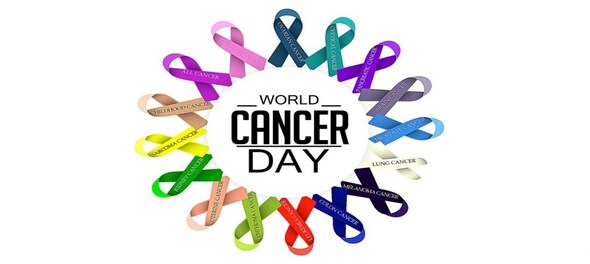
Cancer is one of the world's leading causes of death. In 2021, an estimated 20 million people were diagnosed with cancer, and 10 million died. These numbers will continue to rise at a sharp rate unless some steps are taken for early detection and cure.
Cancer has emerged as the leading cause of death worldwide, accounting for nearly 10 million deaths in 2020 or nearly one in six deaths. The most common cancers are breast, lung, colon and rectum and prostate cancers.
Around one-third of deaths from cancer are due to tobacco use, high body mass index, alcohol consumption, low fruit and vegetable intake, and lack of physical activity.
Cancer-causing infections, such as human papillomavirus (HPV) and hepatitis, are responsible for approximately 30 percent of cancer cases in low- and lower-middle-income countries.
The theme for this year's World Cancer Day is "closing the care gap" fundamentally to bring quality cancer care to countries for which, up until now, it has been out of reach.
A recent WHO survey found that cancer services are covered by a country's largest, government health financing scheme in an estimated 37 percent of low- and middle-income countries, compared to at least 78 percent of high-income countries. This means that a cancer diagnosis has the potential to push families into poverty, particularly in lower-income countries, an effect that has been exacerbated during the COVID-19 pandemic.
Global burden
The cancer burden continues to grow globally, exerting tremendous physical, emotional and financial strain on individuals, families, communities and health systems. The predicted global burden will double to about 29–37 million new cancer cases by 2040, with the greatest increases in low-middle-income countries.
Cancer cases and deaths occur inequitably. Countries with lower incomes have significantly worse population outcomes, and, within countries, people at the lowest economic levels have poorer cancer outcomes and are more likely to suffer financial hardship. Between 30 percent and 50 percent of cancers can currently be prevented by avoiding risk factors and implementing existing evidence-based prevention strategies. The cancer burden can also be reduced through early detection of cancer and appropriate treatment and care of patients who develop cancer. Many cancers have a high chance of cure if diagnosed early and treated appropriately.
Chasing cancer
The cancer burden continues to grow to pose tremendous financial and emotional pressure across families. Can the health infrastructure of the country address the requirements for cancer? Are the interventions available to the economically weaker sections?
Multi-modality treatment capacity must be scaled up to meet this need. Priorities for interventions should be selected according to cancer types and indications. According to WHO certain interventions, such as curative treatment for breast, colorectal, cervix and childhood cancers, are available in countries at all income levels.
The quality of cancer treatment services should be monitored and improved by regulation, national policies, clinical practice guidelines and better training of health care workers. Treatment can be successful only when linked to supportive care services such as nutrition, infection prevention, and control and rehabilitation.
Challenging Canvas
In India, the population-based cancer registries within the National Cancer Registry Programme (NCRP) has provided a broad picture of cancer pattern. The NCRP functions through Population and Hospital Based Cancer Registries (PBCR and HBCR) across different states in India.
There is an urgent need to widen the interventions to reduce the cancer burden and address the inequalities that affect cancer prevention. There is also a need for proactive initiatives from all the concerned stakeholders to assess the efficacy of the existing measures.
The cancer graph in India continues to climb calling for a need to relook and upscale the strategies for prevention and control of the disease. India's cancer incidence is predicted to almost double as a result of demographic changes alone by 2040.
Shortage of trained manpower, insufficient state-of-art facilities, insufficient early detection facilities especially in rural areas, absence of proper data for cancer mortalities are some of the challenges that India faces in tackling the disease.
There has to be a prioritization of research and innovation. From mapping new therapeutic targets to identifying the potential candidates for cancer drugs and improving methods for early detection, researchers in India have designed new ways to treat the disease. This is however not much. Enhancing funds for cancer research can motivate scientists to work in this area.
Besides, India needs to spruce its infrastructure and tighten the regulatory policies for promoting cancer research. There is a need to create a pool of trained manpower both in basic and clinical cancer research and multi-disciplinary collaboration between researchers and clinicians.
— The author, Dr Vanita Srivastava, is an independent science and health writer. Views expressed are personal
Click here to read the author's other articles
Check out our in-depth Market Coverage, Business News & get real-time Stock Market Updates on CNBC-TV18. Also, Watch our channels CNBC-TV18, CNBC Awaaz and CNBC Bajar Live on-the-go!


PM Modi visits Ram Mandir for first time since 'Pran Pratishtha', offers prayers before roadshow
May 5, 2024 8:59 PM
Visiting temples, obliging selfie requests, jabbing rivals – Kangana Ranaut is wooing voters on campaign trail
May 5, 2024 8:23 PM

